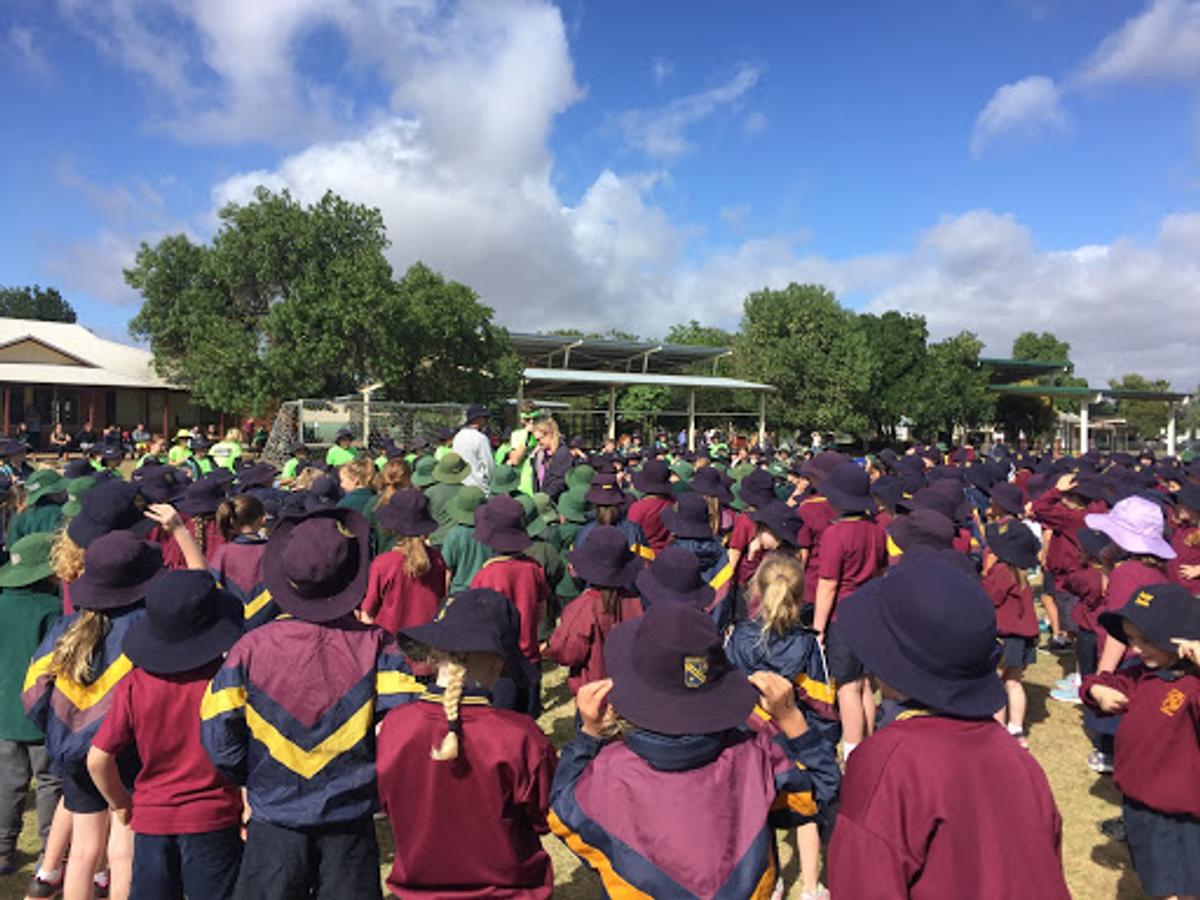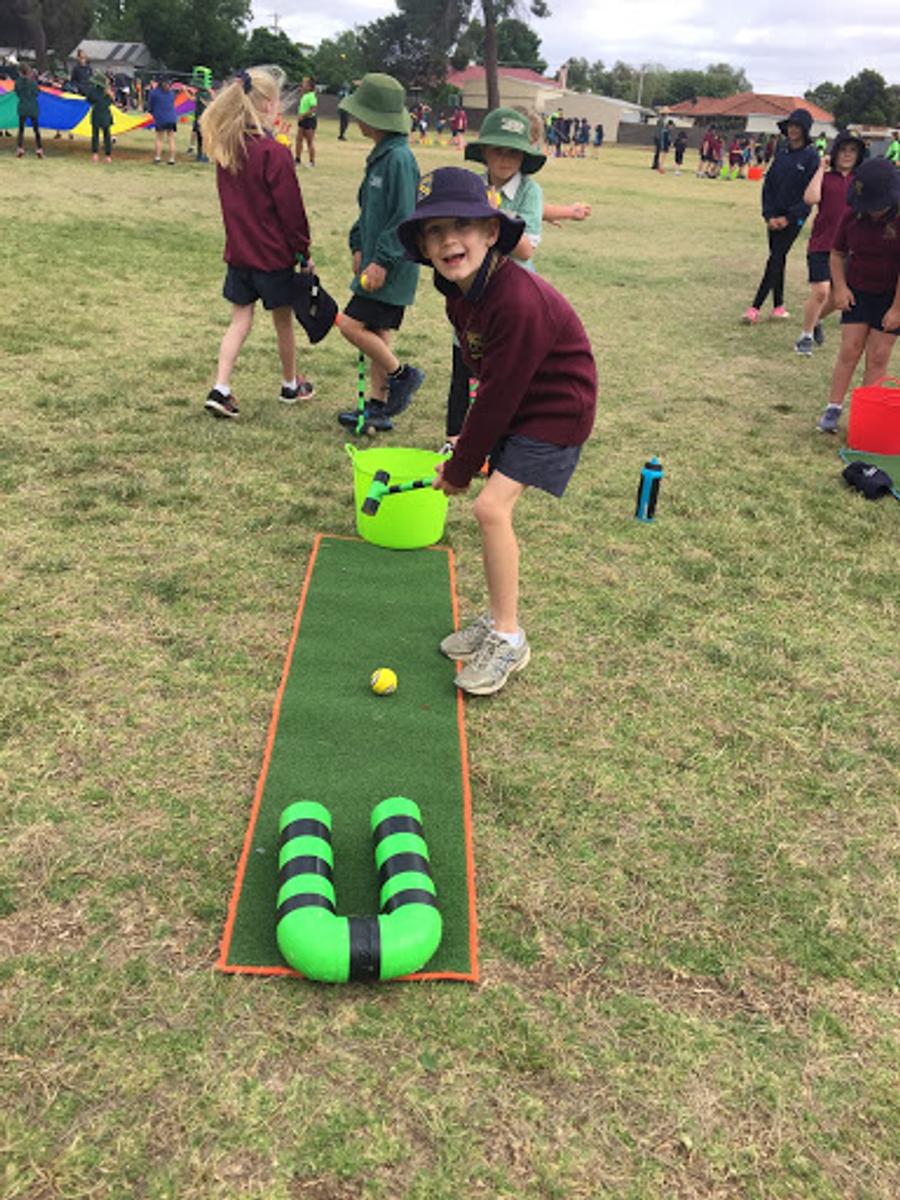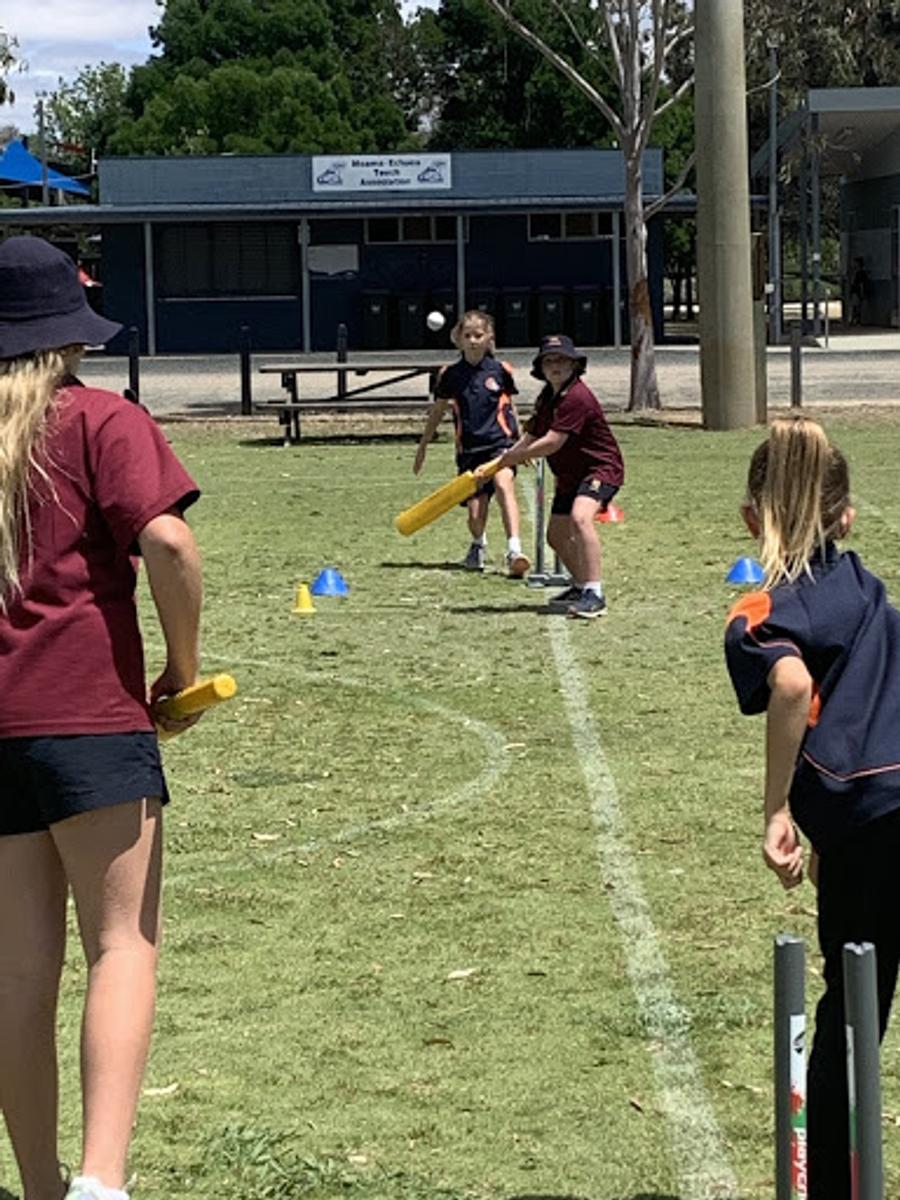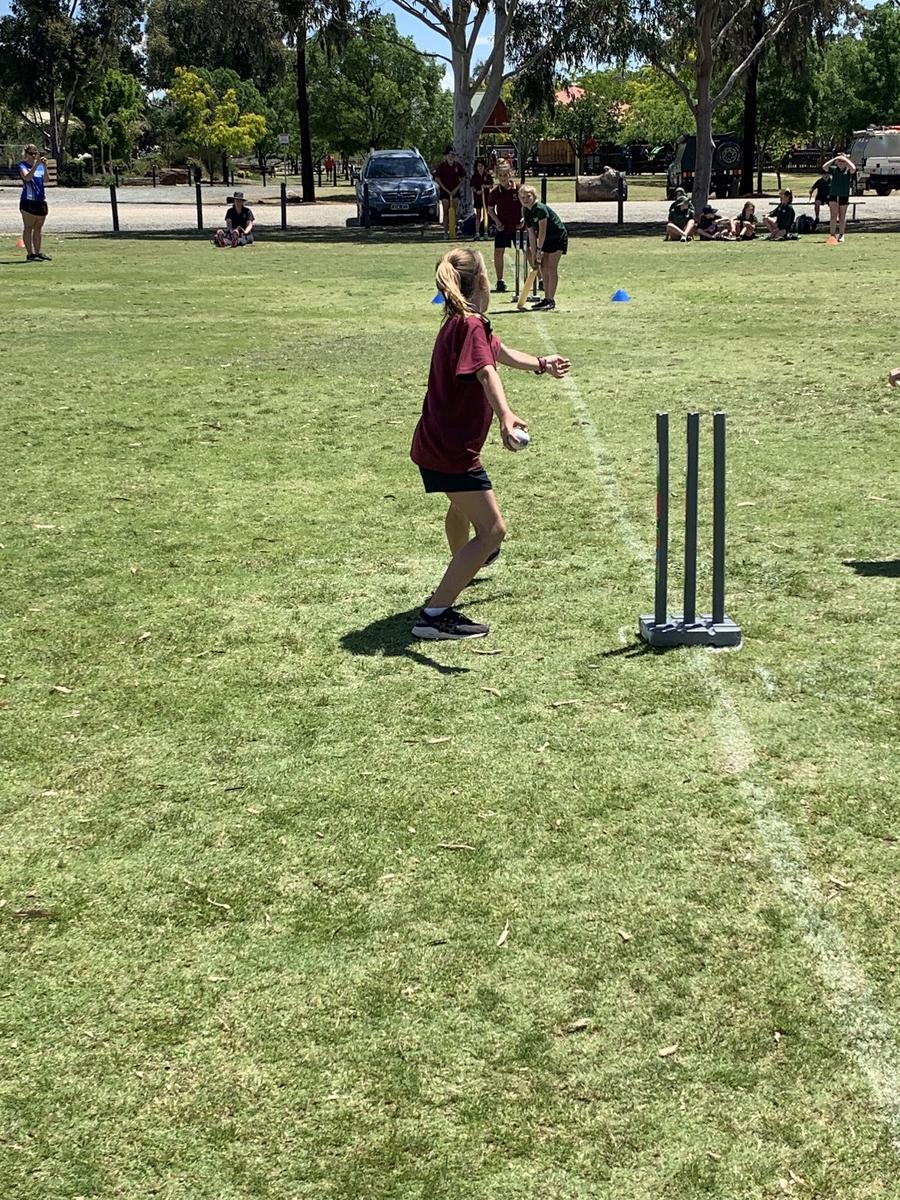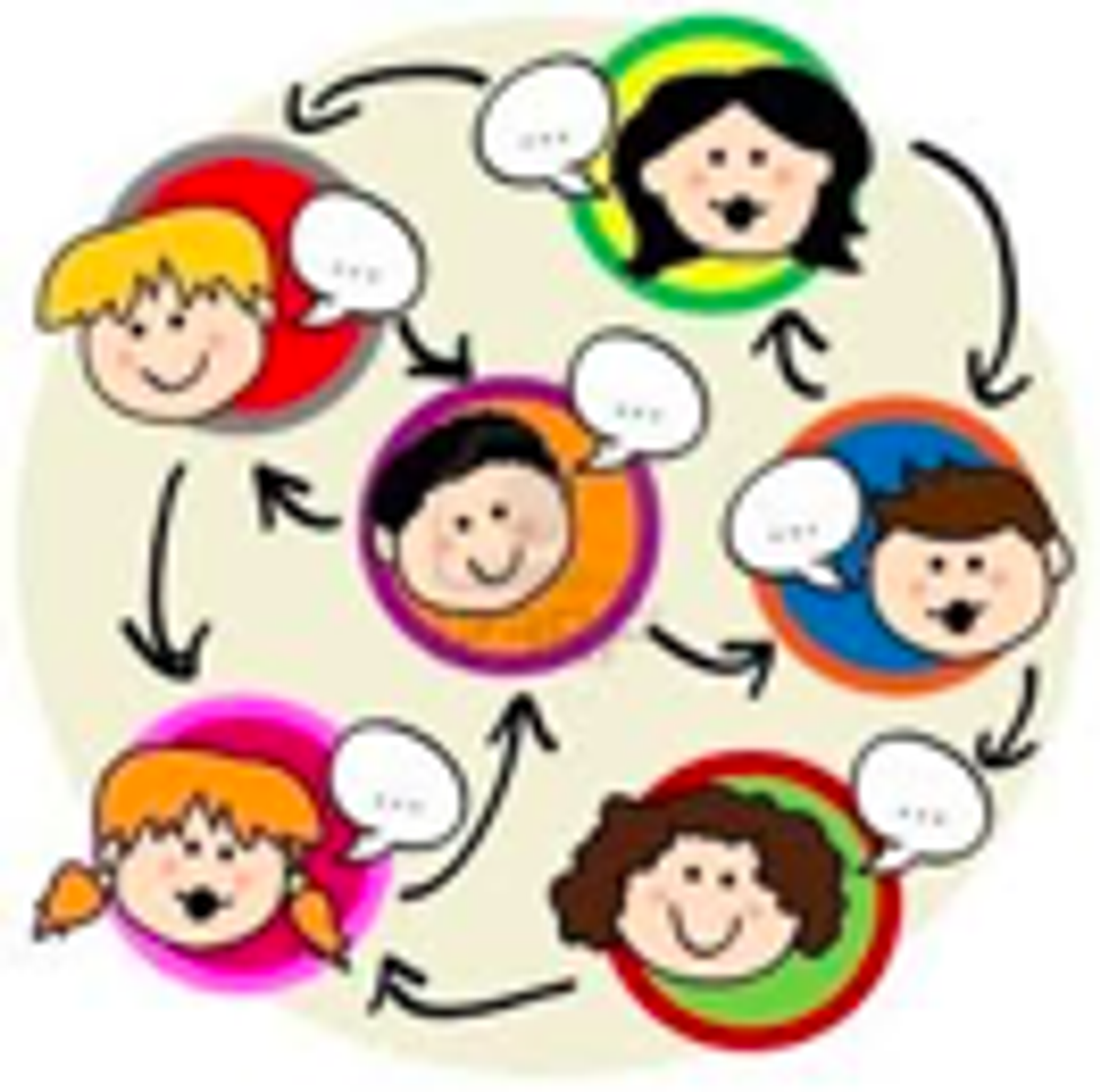F-4 Community News
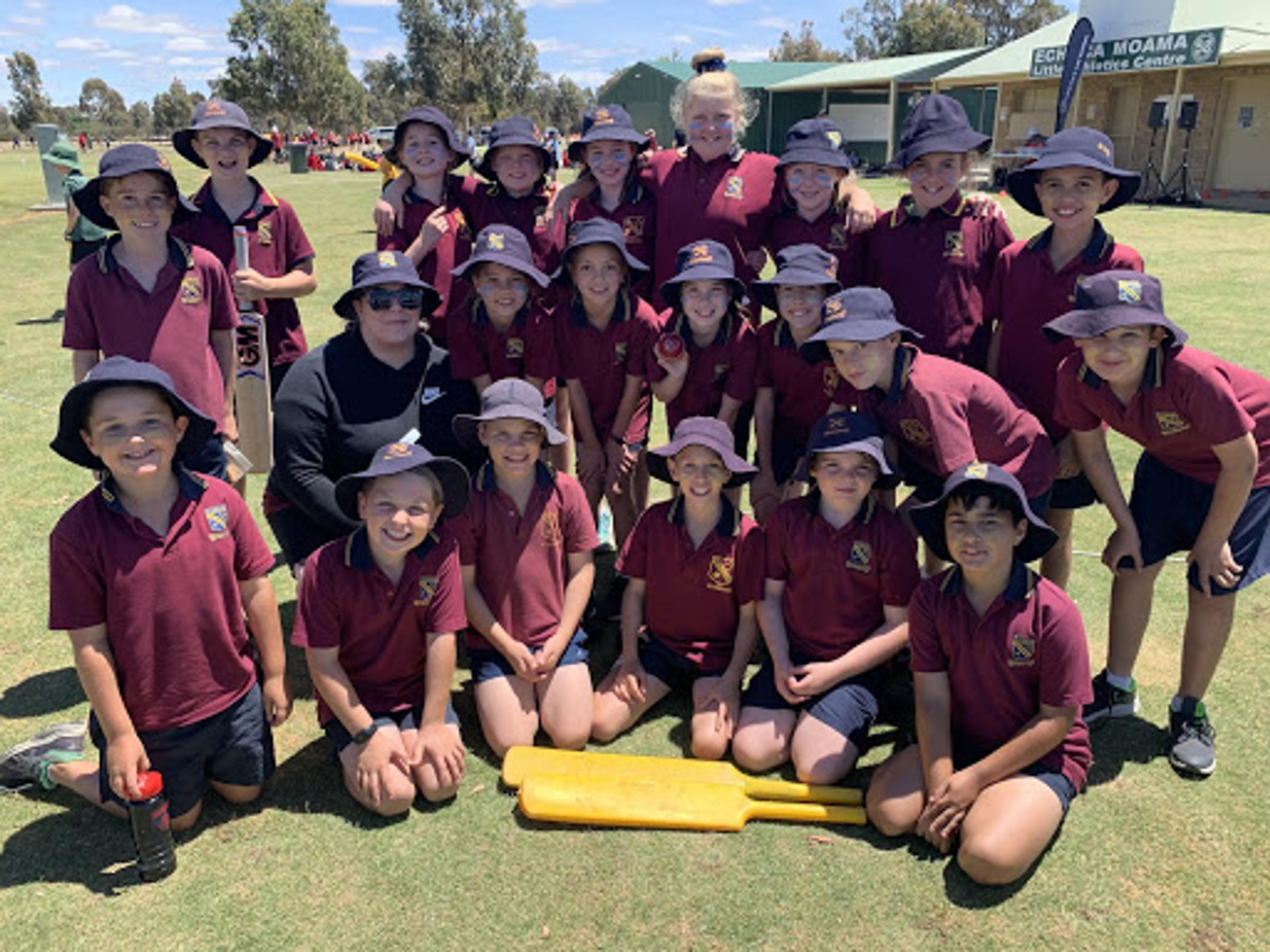
Years 1/2
The Years 1/2 students went to Kyabram P-12 last week to participate in tabloid sports with other schools in the surrounding area. Although the conditions were windy and cold, students had smiles on their faces and had a great time.
Currently in the classrooms students are learning about persuasive writing, location and fractions. We are finishing our last science rotation for Inquiry this week.
Years 3/4
Selected Years 3/4 students had the privilege of attending the Echuca Master Blaster School Cricket Cup in Moama this week. The students participated in four games of cricket against other schools in our region. The students had a great day out in the sunshine, with the girl’s team coming 2nd and the boy’s team coming 7th.
Children's Chatter Matters
Term 4: Language genre/longer and more complex sentences
These activities will help students to make the necessary adjustments to their language so they can communicate for a variety of purposes eg; to tell stories, recount events, persuade, give instructions and report information. Learning about the language and types of words we use in each of these different contexts supports not only the child’s oral language but written language development also.
Focus: Using longer and more complex sentences
Activity 5. Extending children’s sentences
Have a look at the pictures and sentences with your child. Encourage them to extend the sentence using the following prompts: Who (e.g. the man); Where (e.g. at the bank, in Australia); When (e.g. time, day) What doing (running); What like (big, blue)
For example:
Short sentence: The tiger is in the water.
Extended sentence: The famished tiger waded through the water before he caught his prey.
Short sentence: The owl is staring.
Short sentence: The bird is eating
Ask your child's teacher about how they are using these sentence prompts in class.
Activity 6. Modelling and recasting
Modelling and recasting are natural strategies that parents and teachers use as children are learning language. Using these strategies in a more structured way helps children learn the language rules they need to use language appropriately across a variety of situations. These strategies help a child focus on the rules they need to learn. When a child makes an error, the child hears the correct use of language and over time will master it by themselves.
Modelling - providing a good model all the time requires you to use:
- an unhurried speech rate
- clear speech
- short sentences
- appropriate vocabulary
- more repetition and re-stating than you would use if you were talking to another
Recasting – repeat a sentence that corrects an error the child has made or expands the sentence used. The key to recasting is that it immediately follows the child’s sentence and it maintains the meaning of the sentence. Recasting sentences usually occurs without actually correcting the child, that is, you don’t actually need to make the child repeat the corrected sentences. The main idea is to ‘feed’ the correct form back to the child to let them hear it and this should occur naturally as part of conversation. Good recasting occurs without overt criticism, without interrupting the flow of communication and without getting in the way of listening. When you notice you have ‘recasted’ remember to do it again for the same structure two or three times later in the same day.
The following link is to the most comprehensive website available that provides parents with activities that are free, easily accessible and enjoyable. Each activity has been carefully selected to reflect the highest quality, up-to-date research evidence on early literacy development. There is also advice for parents who are concerned about their child’s reading and language development.
http://www.fivefromfive.org.au/parent-resources/

